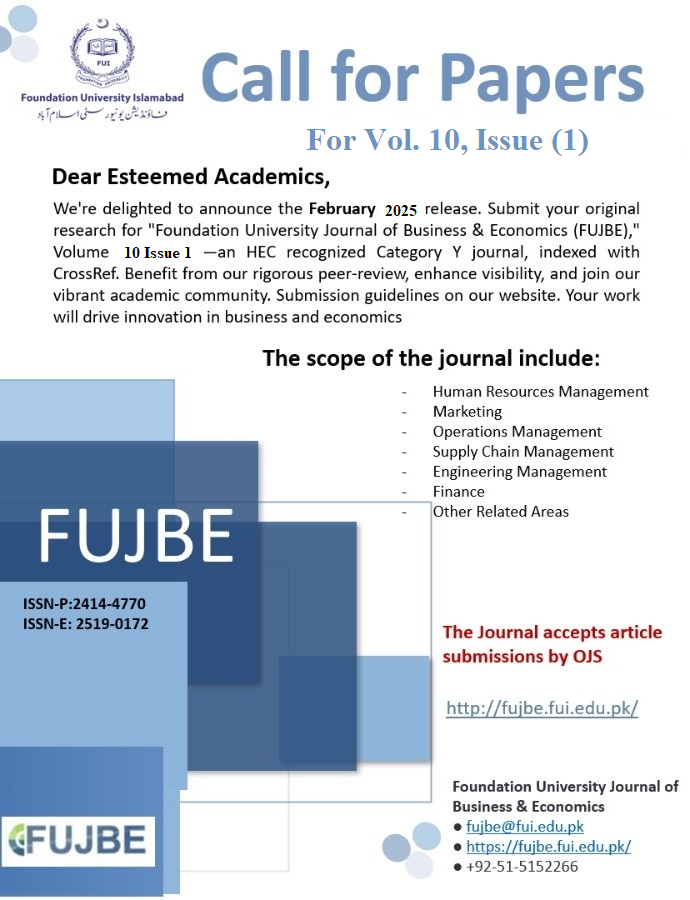Analysing Crimes And Economic Misery In Pakistan: Ardl Bound Testing Approach
DOI:
https://doi.org/10.33897/fujbe.v7i2.678Keywords:
crimes, economic misery, urbanization, ARDL, Pakistan.Abstract
The present study explains economic discomfort, financial shocks, and rapid urbanization increase crime in a
country. Furthermore, this research work highlights the extent to which economic misery and an increase in
urbanization create countless socioeconomic problems in society. The study used annual time series
secondary data for the period 1990 to 2021 collected from different sources. Researchers have found very
limited evidence of economic misery and crime in the existing literature on Pakistan. Thus, carrying out
research work on the subject was the need of the day. The foremost objective of the research work was to
examine crime rates in the presence of economic misery, as denoted by Hanke's Annual Misery Index (HAMI)
and urbanization in Pakistan. The stationarity of the data has been checked by correlogram and Ljung-Box
(LB) statistics. The study used an Autoregressive Distributed Lags approach to investigate how economic
misery and urbanization affect criminal activity in Pakistan. The crime model produced substantial results,
and the outcomes are consistent with the expectations. The findings revealed that the HAMI and urbanization
coefficients are significant with a positive sign, implying that economic hardship and an increase in urban
population have exacerbated Pakistan's crime rate. To control crimes, the government might have to adopt
new strategies that may decrease economic misery, i.e., keep inflation at a desirable level, reduce
unemployment, improve economic growth, and discourage urbanization.



